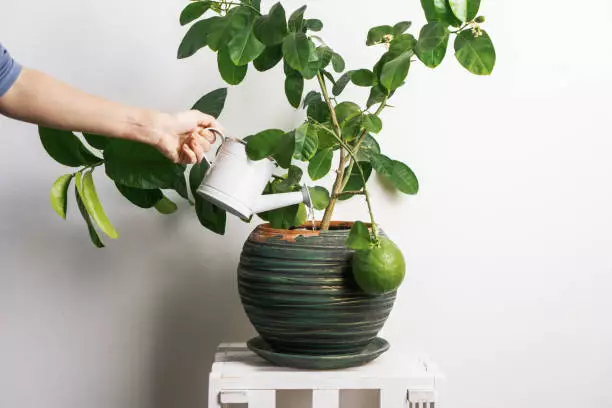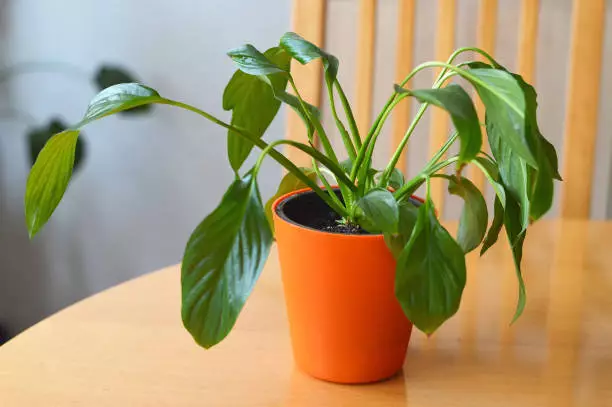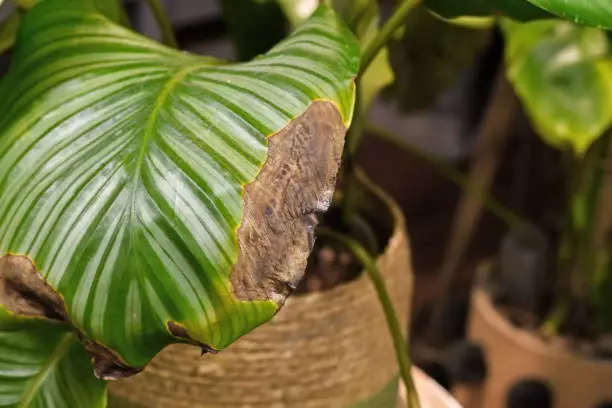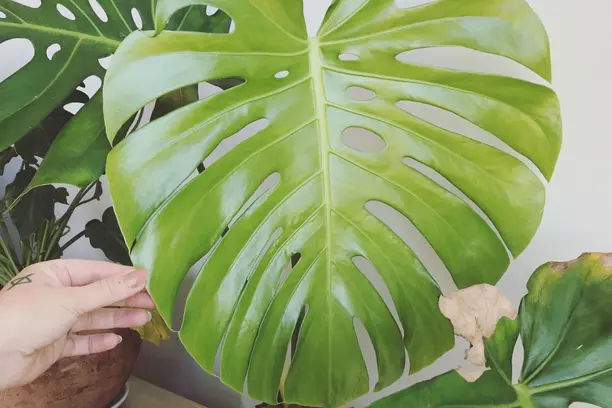ZZ plants thrive better in low light, infrequent watering, average household humidity, fast-draining soils, and monthly fertilization during the growing season, making them ideal for gardeners with busy lifestyles. However, your region’s environmental conditions and personal preference will determine which ZZ plant variety to choose.
How do you identify a ZZ plant?
ZZ plants are native to Eastern Africa and South Africa. They grow in dry grasslands, forests, and along riverbanks. Also, they closely resemble many cycad species (Zamia spp. It’s the reason behind their botanical name, Zamioculcas zamiifolia. Some experts believe they are closely related to elephant ear, philodendron, and anthurium.
Use the following characteristics to distinguish ZZs from other common houseplants;
- It is an evergreen plant
- It has tuberous, fleshy rhizomes for storing water, allowing it to be drought-resistant
- Has pinnately compound shiny green leaves (to 6 inches long) arranged along its short stem, rising from its rhizomes in a herringbone fashion.
- Flowers appear when matured (they’re creamy-white flowers)
- It’s a slow grower (3-5 years). It can grow 2-4-inches in height and three feet wide when planted indoors with low-to-medium light
- Some ZZ plant varieties may have their leaves turn black
ZZ Plant Varieties
ZZ plant cultivars vary by height, size, the color of leaves, and growing requirements. Here are the common ones to help you decide which variety can suit your region’s climate and personal needs:
1. ZZ Raven (The Dark Beauty)
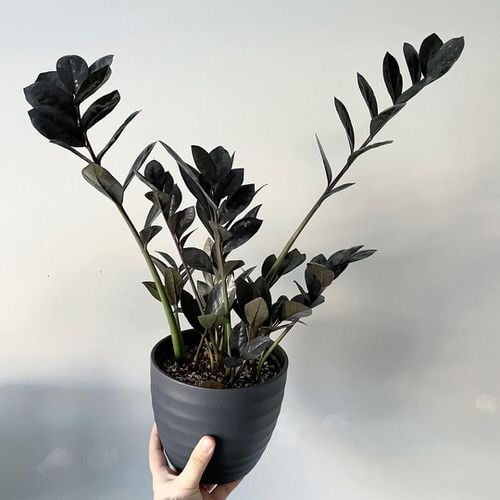
Garden centers in the US introduced the ZZ Raven as a brand-new plant in 2019. Consequently, only licensed and regulated nurseries can sell it because it has a plant patent. Like the birds the plant is named after, ZZ Raven or The Dark Beauty’s leaves turn light-green to dark-green, almost looking black in low light after a few months. It is one of the most common black indoor plants.
ZZ raven can grow to the full height of three feet or slightly taller.
Growing conditions
- Low-light conditions (kitchens, bathrooms, or even basements). Place them in south-facing windows to get indirect light.
- This variety of zz plants needs water when the potting soil completely dries out (once every two weeks in summer and every three weeks in winter)
- A pot with drainage holes (preferably terracotta or any other porous pot)
- Room temperatures between 60- and 75-degrees Fahrenheit
- Average household humidity levels (40%-50%)
Hidden facts
- ZZ Raven’s sap contains calcium oxalate crystals which are mildly toxic to pets and humans when directly ingested. They might also cause irritations on the eye and skin with prolonged exposure.
- While they’re readily available, you might find their prices heftier (starting price of $3,418) than other houseplants.
2. Zenzi (The Dwarf ZZ)
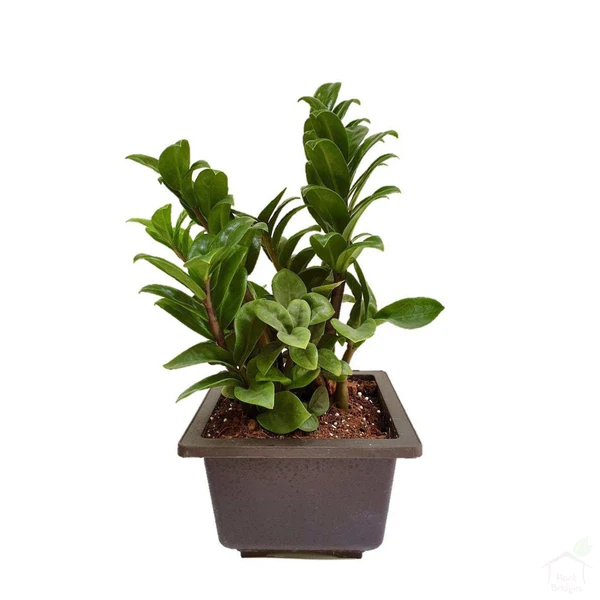
Zenzi is a new ZZ variety known for its dwarf-growing habits, making it a decorative plant for small spaces. Zenzi (The Dwarf ZZ or Dwarf Zamioculcas zamiifolia Zenzi) is shorter than the regular ZZs, reaching a height of at least one inch. Because of its dwarf state, its glossy leaflets crowd on its rachis (leaf stalk), making it appear chunkier. They rarely produce flowers if planted indoors. It contains high calcium oxalate crystals, making it toxic to humans and pets.
Growing conditions and care
- Happy anywhere away from direct light. It can tolerate fluorescent light
- Prefers fast-draining soil with adequate aeration to the roots (60% potting soil with 40% cactus soil)
- Thrives better in porous pots like terracotta
- Re-pot every year for the first three years
- Prefers USDA zones 10 and 11
- Can tolerate average household humidity (40%-50%). Mild misting is allowed on drier days.
- It is mild drought-tolerant and needs bottom-watering every three weeks in summer and four weeks in summer.
- Propagation is best done in spring through leaf cuttings or division of rhizomes.
3. Zamioculcas zamiifolia (Variegata)
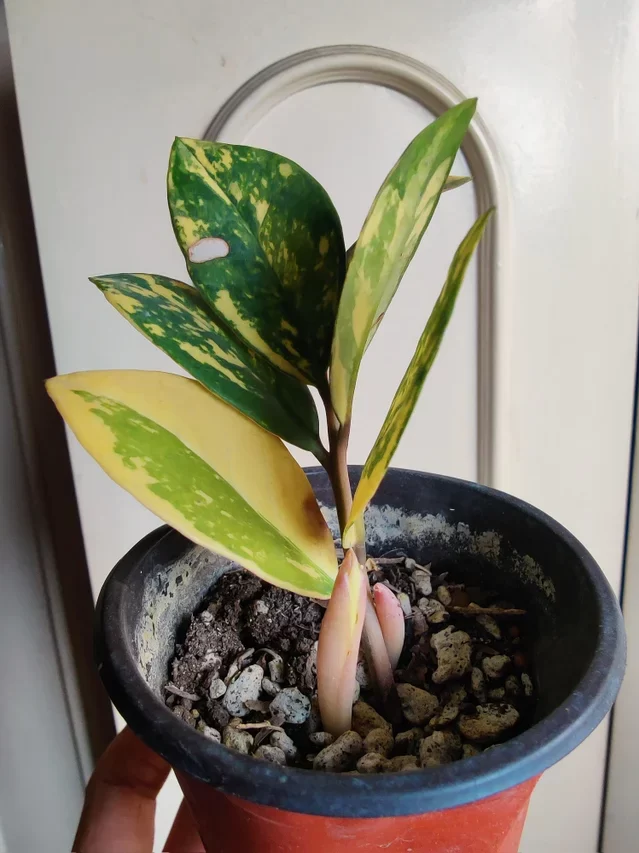
The variegated or Variegata is an aroid ZZ plant cultivar deriving its name from the plant genus Zamia. It leans more on the Araceae plant family. Its green-creamy yellow glossy leaves are clustered, rising outwards from its rhizomes. It can grow 2-3 feet in height and spread. It boasts drought tolerance, making it a suitable plant for xeriscaping, a landscaping practice for conserving water.
The ZZ Variegata comes in two cultivars:
- Gold Variegata- Their leaflets are gold-to-yellow and very rare to come by. They might need moderate sunlight due to insufficient chlorophyll content on their leaves.
- White Variegata- Green and white-colored leaflets instead of green and golden-yellow. Their leaves might turn cream to silver or grey.
Growing conditions
- It requires fast-draining and well-aerated potting soil (pH of 5.6-7.5)
- Outdoor plants thrive better in USDA hardiness zones 9a to 11
- Water it when the top two inches of soil is completely dry. Watering should happen every one or two weeks during summer and once a month in winter
- Outdoor cultivars can tolerate moderate sun to partial light due to low chlorophyll for photosynthesis. Indoor plants can also do well in moderate sun but not prolonged. Move them to a place with low light like the bathroom or office without windows under fluorescent light after receiving the morning sun.
- Average indoor temperatures of 65- 85 degrees Fahrenheit
- Minimum humidity of 40%
- Once in month fertilization during its active growing phase (summer and spring)
- Should be re-potted when it outgrows the container (every 1-2 years in a pot 1-2 inches larger than the plant)
- Prune drying or yellow foliage to allow the plant to draw and utilize energy, encouraging new growth
- Propagate using stem cuttings with two leaves or leaflet cuttings
4. Lucky Classic Plant
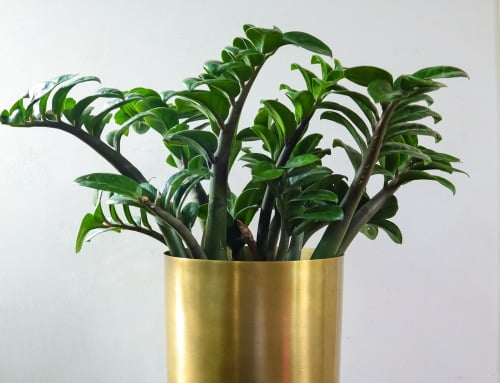
Unlike other ZZ cultivars, Lucky Classic’s leaves look rounder and feather-like. However, they are medium-dark green, glossy, and fleshy like the common cultivar. Its flowers might bloom during spring and summer.
Growing conditions
- It prefers a well-drained and aerated potting mix (cactus soil with sand)
- It’s happy in partial shade-like places
- It is drought-tolerant; hence watering should be only when the soil is completely dry. After every two weeks in summer and once a month in winter
5. The ‘Dark Zamicro’ & ‘Zamicro’
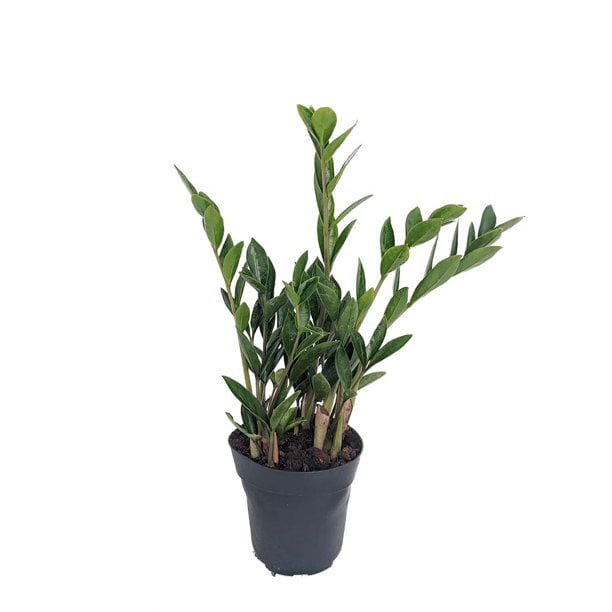
The ‘Dark Zamicro,’ also called Dwarf Black ZZ plant, is closely related to Raven ZZ because its glossy leaflets look almost black. The only distinct feature differentiating the two is their height (‘Zamicro’ grows no more than two feet, while Raven ZZ is three feet tall).
Though this ZZ cultivar’s leaves are smaller than the regular ZZs, they have the same medium-dark glossy appearance. Its growing conditions are similar to Raven ZZ’s.
What type of ZZ plant is white?
If you want a medium-green plant with some dashes of white, then the White Variegata is the ZZ cultivar to go for. Their leaflets are green and white-colored, instead of green and golden-yellow. Their leaves might turn cream to silver or grey, depending on where you place them.
List of plants similar to the ZZ plant
ZZ’s are aroids by nature and belong to the family Araceae, meaning they share many adaptations for tolerating temperate weather conditions with other plants like:
- Low-light
- Infrequent watering
- Fast-draining soils
- High temperatures between 65- 85 degrees Fahrenheit
Plants that share adaptation characteristics like ZZ plants the following:
Pothos (Epipremnum aureum)
They also grow in temperate regions (tropical and subtropical forests worldwide), but they’ve been domesticated as houseplants.
Philodendrons (Anthurium)
Have large evergreen leaves that are lobed. They also have calcium oxalate crystals like ZZs, poisonous to humans and pets when eaten or exposed to the skin.
Alocasias (Alocasia)
They have tuberous rhizomes and broad leaves from the family Araceae. They have crystals of calcium oxalate when in raw form.
Monsteras (Monstera deliciosa)
Also called Swiss cheese plants, Monstera is native to southern Mexico and has spread to many tropical areas. It closely resembles the Split-leaf Philodendron because of its leaves and growing habits.
Arrowhead Vines (Syngonium podophyllum)
It’s an aroid native to Mexico, West Indies, Florida, Texas, and other places. When planted indoors, it can grow to a height of 4.9 feet.
Aglaonemas (Aglaonema spp)
They are aroids native to Asia and New Guinea and are popularly called Chinese evergreens. Plants under this genus are adapted to humid, low-light, and infrequent watering.
References
- Research Gate: ZZ A Unique Tropical Ornamental Foliage Plant
- University of Connecticut Extension: Zamioculcas zamifolia Plant
